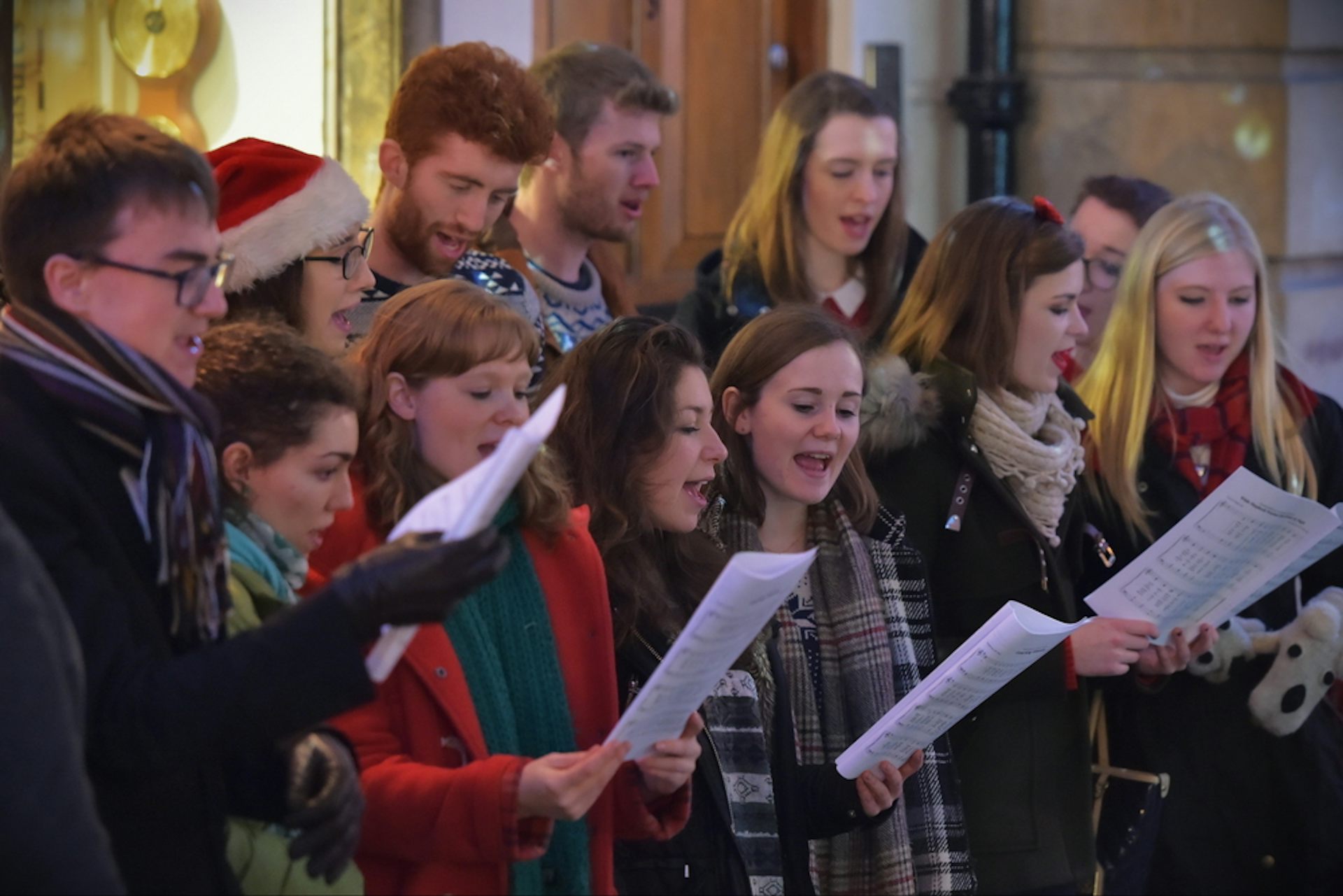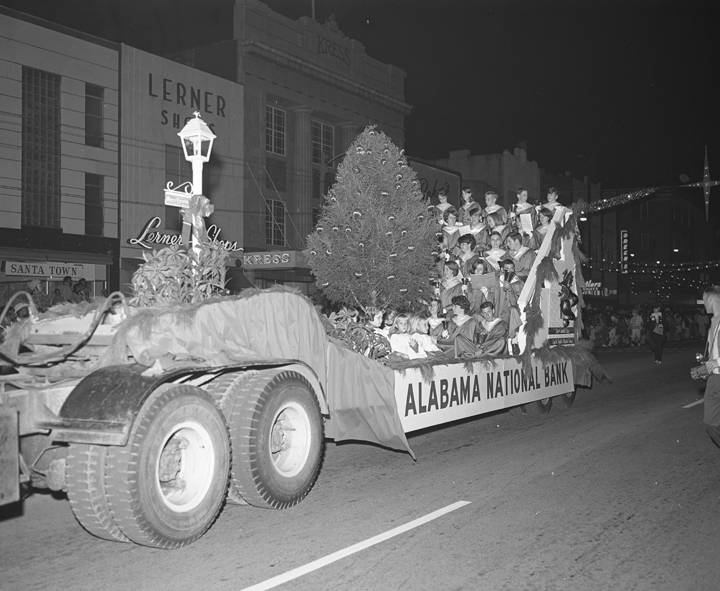--- Christmas Facts ---

“Jingle Bells” was written for Thanksgiving, not Christmas.
The song was written in 1857 by James Lord Pierpont and published under the title “One Horse Open Sleigh”. It was supposed to be played in the composer’s Sunday school class during Thanksgiving as a way to commemorate the famed Medford sleigh races. “Jingle Bells” was also the first song to be broadcast from space.

Not what your expected...
Rudolph’s red nose is probably the result of a parasitic infection of his respiratory system. According to Roger Highfield, the author of the book “The Physics of Christmas: From the Aerodynamics of Reindeer to the Thermodynamics of Turkey” the world’s most famous reindeer has a red nose due to a parasite. However, Rudolf’s relationship with his parasite is symbiotic: after all, the red nose illuminates the path through the winter night for the whole reindeer team.

Tradition of Singing Carols
Have you ever wondered why groups of people go to door to door singing carols? The tradition is based on the English custom of wassailing which was a tradition to toast to someone’s good health and fortune. St. Francis of Assisi took this tradition and converted it to the modern form of carolling.

Sinterklaas (the Dutch version of Santa Claus) arrives from Spain, not from the North Pole.
That’s not the only weird thing about the Dutch Christmas. Sinterklaas has his little helpers, but they are not adorable hard-working elves: they are black-faced boys and girls who can steal your kids if they misbehave, and bring them to back Spain which is, according to the Dutch, a severe punishment.
Two weeks before Christmas is the one of the two most popular times for couples to break up.
According to data analyzed from Facebook posts and statuses, couples are more likely to end their relationship two weeks before Christmas and two weeks after Valentine’s day, during the spring break. Christmas Day, however, is the least favorite day for breakups.

Also known as yule trees.
The first known instances of using Christmas trees were in 16th century Germany. Instead of the glitzy decorations we see on them today, they were decorated with fruits and nuts. These trees are evergreen and are also known as yule trees.

Is Christmas Christ's Birthday?
Most Christians today probably can’t imagine Christmas on any other day than December 25, but it wasn’t always that way. In fact, for the first three centuries of Christianity’s existence, Jesus Christ’s birth wasn’t celebrated at all. The religion’s most significant holidays were Epiphany on January 6, which commemorated the arrival of the Magi after Jesus’ birth, and Easter, which celebrated Jesus’ resurrection. The first official mention of December 25 as a holiday honoring Jesus’ birthday appears in an early Roman calendar from 336 A.D. But was Jesus really born on December 25 in the first place? Probably not. The Bible doesn’t mention his exact birthday, and the Nativity story contains conflicting clues. For instance, the presence of shepherds and their sheep suggest a spring birth. When church officials settled on December 25 at the end of the third century, they likely wanted the date to coincide with existing pagan festivals honoring Saturn (the Roman god of agriculture) and Mithra (the Persian god of light). That way, it became easier to convince Rome’s pagan subjects to accept Christianity as the empire’s official religion The celebration of Christmas spread throughout the Western world over the next several centuries, but many Christians continued to view Epiphany and Easter as more important. Some, including the Puritans of colonial New England, even banned its observance because they viewed its traditions—the offering of gifts and decorating trees, for example—as linked to paganism. In the early days of the United States, celebrating Christmas was considered a British custom and fell out of style following the American Revolution. It wasn’t until 1870 that Christmas became a federal holiday.

Santa’s Reindeer
Everyone has heard of Rudolph the red nose reindeer. But it would be impossible for Rudolph to pull Santa’s sled alone since it is filled to the brim with gifts for every good child in the world. This is why there are eight other reindeer to help him. They are called Cupid, Dancer, Vixen, Dunder, Comet, Dasher, Prancer, and Blixem.

A Traditional Meal Celebrated Around the World
The traditional family meal is an integral part of the holiday's festivities. Everything from festive libations to the main course differ depending each culture's holiday traditions.

Not sure what to do with your tree after Christmas?
Try taking it to your local zoo. They will often recycle it by using it as food for the animals.

Image of Santa Claus flying his sleigh
The image of Santa Claus flying his sleigh began in 1819 and was created by Washington Irving, the same author who dreamt up the Headless Horseman.

Hanging stockings started with an accident.
According to legend, we hang out stockings by the chimney with care thanks to a poor man who didn't have the money for his three daughters' dowries. Generous old St. Nick (remember, that's his trademark!) dropped a bag of gold down their chimney one night, where the girls had hung their stockings to dry by the fire. That's where the gold ended up, and allegedly how the tradition began.
First artificial Christmas Tree
The first artificial Christmas Tree wasn’t a tree at all. It was created out of goose feathers that were dyed green. The first artificial Christmas trees were developed in Germany in the 19th century, due to a major continuous deforestation. The feather trees became increasingly popular during the early 20th century and finally made their way to the US.

There are many traditions for decoration of and with trees during celebrations around Christmas times. One of these comes from the vikings.
Since long before Christianity appeared, vikings used to decorate their homes with evergreen trees and plants to celebrate the Winter Solstice, the 21st or 22nd of December. The Winter Solstice is the shortest day, and marks the point when days grow longer. In viking tradition, the Winter Solstice marks the return in strength of the sun god, Baldr, which had been weakend during winter. The evergreen trees and plants served as a reminder that the god would glow again and summer was on it's way.
Twelve Days of Christmas.
The 12 days of Christmas is the period that in Christian theology marks the span between the birth of Christ and the coming of the Magi, the three wise men. It begins on December 25 (Christmas) and runs through January 6 (the Epiphany, sometimes also called Three Kings' Day). The four weeks preceding Christmas are collectively known as Advent, which begins four Sundays before Christmas and ends on December 24.

The meaning of Xmas
Ever wondered why Christmas is also known as Xmas? The X comes from the ancient Greek language where X refers to Christ. So, Xmas simply means Christmas.

Santa Claus
One of the most interesting aspects of Christmas, especially for children, is Santa Claus. Children want to catch Santa Claus bringing them presents. The character is based on St. Nicholas who loved children and also enjoyed giving gifts to children secretly.

The X in Xmas
Xmas is a common abbreviation of the word Christmas, however, some people think that this spelling is not right, because it takes the “Christ” out of Christmas. Don’t worry, no one is taking the “Christ” anywhere. In the Greek alphabet, the letter X (“chi”) is the first letter of the Greek word for Christ or Christos.

Christmas Candy Cane Story
When the Candy Cane was invented in Germany, it was made into a J for Jesus and the red stripes symbolize his blood. Read on to know more!

Mistletoe Story
Mistletoe kissing originated with fertility rites. The hanging sprig is a very ancient symbol of virility and therefore anybody standing beneath it is signaling that he or she is sexually available.

Celebrating Christmas used to be illegal
By the time the Puritans settled Boston, celebrating Christmas was outlawed. Talk about missing the Christmas spirit! From 1659 to 1681, anyone caught making merry would face a fine for celebrating the once-pagan day. And after the Revolutionary War, the new Congress found the day so unimportant that they even held the first session on December 25, 1789. Christmas wasn't proclaimed a federal holiday for nearly another century, proving that the Grinch's notorious hatred of the holiday was alive and well long before he was.

The First State to Recognize Christmas
The concept of Christmas became popular in the early 1800s. It's popularity was attribute to Washington Irving due to his publication "The Keeping of Christmas at Bracebridge Hall". Other's are to thank for inspiring this holiday such as Queen Victoria of Britain who introduced the tradition of Christmas Trees and carols and Charles Dickens whom also published a famous Christmas tale called "A Christmas Carol". Due to these people and their holiday spirit, Alabama became the first state in the US to recognize Christmas as a legal holiday.